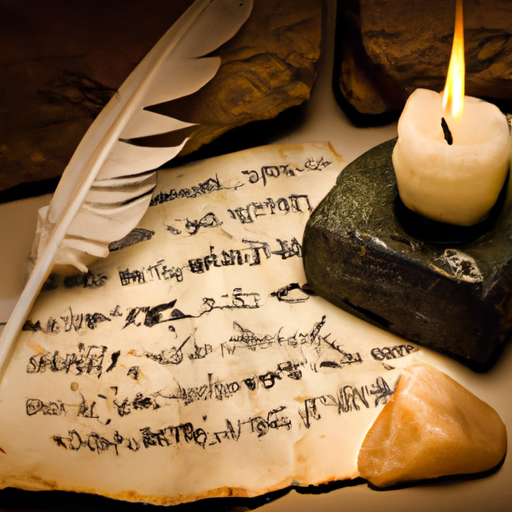Unlocking the mysteries of ancient Egypt, hieroglyphs have fascinated historians and archaeologists for centuries. These enigmatic symbols offer a glimpse into the lives and beliefs of the Pharaohs and their civilization.
The Birth and Evolution of Hieroglyphs
Ancient Egyptian hieroglyphs are among the oldest known written languages, with origins tracing back to around 3100 BC. Evolving from early pictographic symbols to a complex system of over 700 characters, they blended logographic and alphabetic elements. The primary purpose of hieroglyphs was to communicate religious, administrative, and monumental inscriptions, primarily etched on temple walls, tombs, and papyrus. The term &8220;hieroglyph&8221; comes from the Greek words &8220;hieros&8221; (sacred) and &8220;glyphein&8221; (to carve), highlighting their significance in sacred writings and monuments. Unlike alphabets, hieroglyphs could represent full words, sounds, or specific concepts, making them incredibly versatile. Over time, a cursive form known as hieratic emerged for more practical day-to-day uses. This intricate writing system thrived during Egypt’s dynastic periods, evolving further into the Demotic script around 7th century BC, simplifying it for widespread public use. Despite its eventual decline, the grandeur and complexity of hieroglyphs remain an enduring testament to ancient Egypt’s cultural and intellectual legacy.
Cracking the Code: The Rosetta Stone
One of the most significant breakthroughs in understanding hieroglyphs came with the discovery of the Rosetta Stone in 1799 by French soldiers in the Nile Delta. This granite slab, dating back to 196 BC, features the same text inscribed in three scripts: Greek, Demotic, and hieroglyphs. The Greek inscription served as a crucial key since scholars could read ancient Greek, thus providing a comparative template. The French scholar Jean-François Champollion played a pivotal role in deciphering the stone. By 1822, after meticulous study, he announced his success in cracking the hieroglyphic script, revealing a wealth of historical and cultural knowledge about ancient Egypt. Champollion&8217;s work illuminated the symbolic and phonetic aspects of hieroglyphs, allowing for the translation of texts that had long been shrouded in mystery. His breakthrough not only opened the door to understanding Egypt’s written history but also paved the way for the field of Egyptology. Without the Rosetta Stone, the depths of ancient Egyptian civilization might have remained largely inaccessible.
Religious Significance and Cultural Insights
Hieroglyphs were deeply intertwined with the religious and cultural fabric of ancient Egypt. They were regarded as sacred, with Egyptian priests believing that words held profound magical power. This belief endowed inscriptions with the ability to influence both the mundane and the divine. Hieroglyphs adorned temple walls and tombs, narrating stories of gods, creation myths, and afterlife beliefs. These inscriptions were not mere records; they were spiritual tools intended to guide the souls of the deceased into the afterlife and bargain for favor with deities. Significant narratives, such as the journey of the sun god Ra or the resurrection of Osiris, are preserved in these texts. Hieroglyphs also chronicled historical events, conveyed royal decrees, and celebrated victories, contributing immensely to our understanding of ancient Egyptian chronology and governance. Beyond religious texts, they offer invaluable insights into daily life, social structure, and economic activities. Artifacts like the Book of the Dead, which outlines spells and preparations for the afterlife, showcase the intricacies of Egyptian spirituality. Thus, the religious and cultural contexts captured through hieroglyphs illuminate the worldview of the ancient Egyptians, bridging the past and the present.
The Art and Craftsmanship of Hieroglyphic Writing
The creation of hieroglyphic inscriptions was itself an art form, demanding precision, skill, and reverence. Scribes, often of high social status, underwent rigorous training, learning to master the thousands of symbols. The process required not only an understanding of the language but also artistic talent. Hieroglyphs were written in rows or columns, and they could be read left to right, right to left, or top to bottom, determined by the direction the characters faced. This flexibility added both complexity and beauty to the inscriptions. Materials used for writing included stone, wood, pottery, and papyrus—the latter being a significant Egyptian innovation. The tools comprised reed pens and brushes, and pigments made from natural minerals. Inscriptions on monuments and tombs were typically carved or painted with an eye for detail and harmony, aiming to create aesthetically pleasing and durable records. This craftsmanship extended to the symbolic use of colors, where each hue carried specific meanings—green for growth, blue for divinity, and red for chaos or power. The meticulous artistry involved in producing hieroglyphs underscores their importance beyond mere communication; they were expressions of devotion, status, and identity.
Modern Techniques in Hieroglyphic Research
Advancements in technology have revolutionized the study of ancient hieroglyphs, allowing for deeper insights and discoveries. Digital imaging, including infrared and ultraviolet photography, has unearthed previously invisible details on ancient artifacts and inscriptions. These techniques help identify subtle differences in pigments and reveal underlayers of writing that have faded or been erased over millennia. 3D modeling and laser scanning provide detailed reconstructions of damaged or eroded inscriptions, preserving them digitally for future study. Additionally, machine learning and artificial intelligence are being utilized to analyze hieroglyphic texts at unprecedented scales. Programs can now recognize patterns, decipher unreadable sections, and translate large volumes of text far more quickly than manual methods. Online databases and collaborative platforms have also democratized access to hieroglyphic texts, allowing researchers worldwide to share findings and advance collective knowledge. These technological tools and collaborations continue to uncover new aspects of ancient Egyptian civilization, pushing the boundaries of what we know about their language and culture. As we refine these methods, the enigmas of hieroglyphs—carriers of the Pharaohs&8217; secrets—are gradually decoded, enriching our understanding of history&8217;s most fascinating dynasties.
